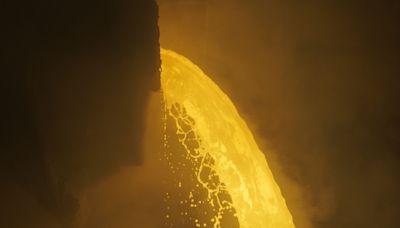Search results
Shanghai [a] is a direct-administered municipality and the most populous urban area in China. The city is located on the Chinese shoreline on the southern estuary of the Yangtze River, with the Huangpu River flowing through it.
- Overview
- City site
- Climate
- City layout
Shanghai, city and province-level shi (municipality), east-central China. It is one of the world’s largest seaports and a major industrial and commercial centre of China.
The city is located on the coast of the East China Sea between the mouth of the Yangtze River (Chang Jiang) to the north and the bay of Hangzhou to the south. The municipality’s area includes the city itself, surrounding suburbs, and an agricultural hinterland. Shanghai is China’s most-populous city, and the municipality is its most-populous urban area.
Shanghai municipality is bordered by Jiangsu province to the north and west and Zhejiang province to the southwest. It includes the 18 districts constituting the city of Shanghai and several islands in the mouth of the Yangtze and offshore to the southeast in the East China Sea. The largest island, Chongming, has an area of 489 square miles (1,267 square km) and extends more than 50 miles (80 km) upstream from the mouth of the Yangtze; it and the islands of Changxing and Hengsha administratively comprise a county under Shanghai municipality.
Britannica Quiz
All About Asia
The mainland portion of the city lies on an almost level deltaic plain with an average elevation of 10 to 16 feet (3 to 5 metres) above sea level. It is crisscrossed by an intricate network of canals and waterways that connect the municipality with the Lake Tai region just to the west.
The city’s maritime location fosters a mild climate characterized by minimal seasonal contrast. The average annual temperature is about 61 °F (16 °C); the July maximum averages about 80 °F (27 °C), and the average January minimum is about 37 °F (3 °C). About 45 inches (1,140 mm) of precipitation fall annually, with the heaviest rainfall in June and the lightest in December.
Exclusive academic rate for students! Save 67% on Britannica Premium.
As China’s main industrial centre, Shanghai has serious air, water, and noise pollution. Industrial relocation and construction in the suburbs since the 1950s initially helped alleviate central city air pollution, although high population density and mixed industrial-residential land use continued to cause problems. The Suzhou River (the lower reach of Wusong River) and the Huangpu River (a tributary of the Yangtze), which flow through the city, are severely polluted from industrial discharges, domestic sewage, and ships’ wastes; nonetheless, the Huangpu is Shanghai’s main water source. Environmental protection and urban cleanliness are enhanced by industrial and solid waste resource-recovery operations run by a municipal corporation. More than 1,000 different materials are recycled, including plastic, chemical fibre and residues, machine components, oil and grease, rags, human hair, and animal bones.
The municipality radiates toward the north, west, and south from the confluence of the Suzhou and Huangpu rivers. Surrounding the central core is a transitional zone on both banks of the Huangpu, which encompasses a partially rural area of about 160 square miles. The banks of the Suzhou River, an important inland waterway connection to the interior hinterland, are occupied by a westward arterial extension of the transitional zone. To the south, however, the transitional zone terminates abruptly a few miles south of the central Shanghai urban core, at the Huangpu.
- Baruch Boxer
Explore Shanghai's modern and historic attractions, from the Bund skyline to the Ming Dynasty garden. Find tips on how to visit, where to shop, and what to see in this vibrant city.
- A ride in the Maglev train from Pudong Airport to the city center is a perfect way to feel super-modern Shanghai. At 431 kph (270 mph, twice the sp...
- Strolling along The Bund is one of the things you should never miss when on a tour to Shanghai. The Bund displays Shanghai's classic skyline views...
- Located on the People's Square near Nanjing Road, the "glassy" Shanghai Museum has a large collection of rare cultural relics — over 120,000 pieces...
- Not far from the Bund, Yuyuan is the most revered and the only surviving Ming Dynasty garden in Shanghai. It has become a city highlight due to its...
- The fifth tallest building in the world competes with the Oriental Pearl TV Tower for greatest elevated views in the Shanghai metropolitan. Althoug...
- Shanghai Disneyland Park is the first Disney theme park in mainland China, which blends the magic of Disney and unique cultural elements of China....
- Not only do you get to enjoy sitting inside a revolving hotel in this revered and outstanding land mark, but you also get to see Shanghai metropoli...
- Tourists enjoy a variety of domestic and international live performances — dances, music competitions, shows and acrobatics at this venue. Examples...
- You can choose to stroll around by foot to admire the numerous fascinating canals, bridges and architecture in this old water town in Shanghai. Alt...
- Famous Nanjing Road is an equivalent of New York's Fifth Avenue. Get a taste of bustling Chinese commerce where retailers from all over the world d...
- China’s Largest City. Shanghai is certainly not the largest city in China for its geographical area, but ranks China’s largest city in terms of the population.
- A World Financial Center. With the implementation of the reform and open-up policy, Shanghai firstly became a core port for domestic and international export and import, which contributes to the fast develop of local economy, and attracts foreign companies to establish commercial cooperation with Shanghai.
- A Multi-cultural Metropolis of History and Modernity. In terms of cultural and historical facts about Shanghai, the colonial past makes it unique from other cities in China.
- 144-Hour Visa-Free Transit is Implemented in Shanghai. 144-hour Visa-free transit is implemented in Shanghai for foreign citizens from 53 countries, including Canada, Brazil, Denmark, France, UK, USA, Italy, Japan, Poland, etc.
Explore Shanghai, China's largest city and a vibrant cultural center, with China Highlights. Find out the best time to visit, top attractions, places to stay, and private tours to book.
Discover Shanghai's history, excess, glamour and exotic promise with Lonely Planet's tips and recommendations. Explore attractions, articles, activities and beyond Shanghai holidays.
Learn about Shanghai's population, culture, transportation, attractions, history, and more. Find out why Shanghai is the world's largest city, a world finance and cultural center, and a popular destination for expats and travelers.



